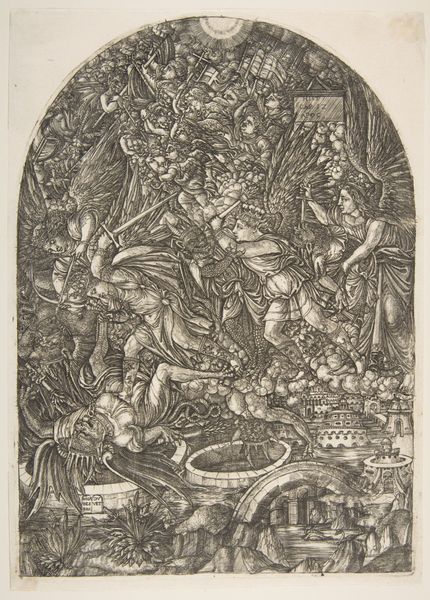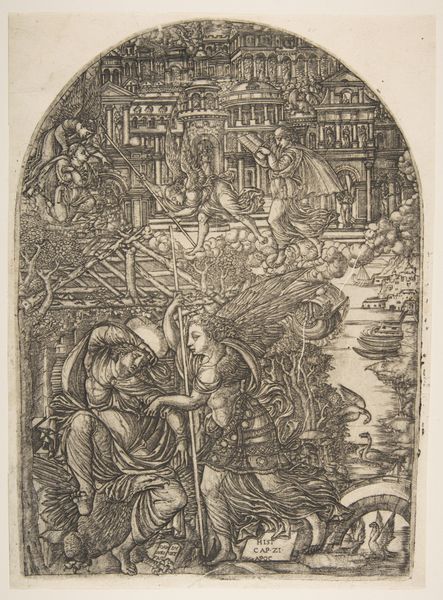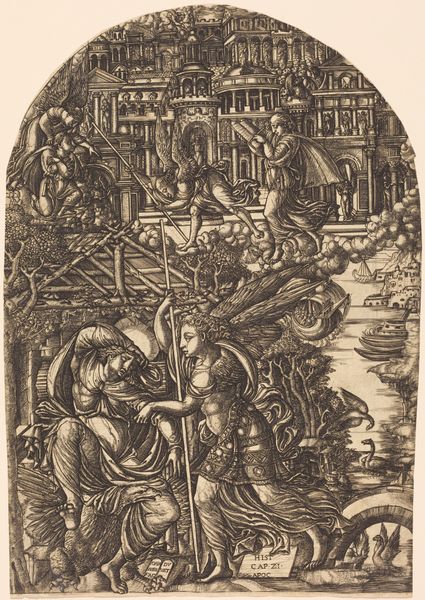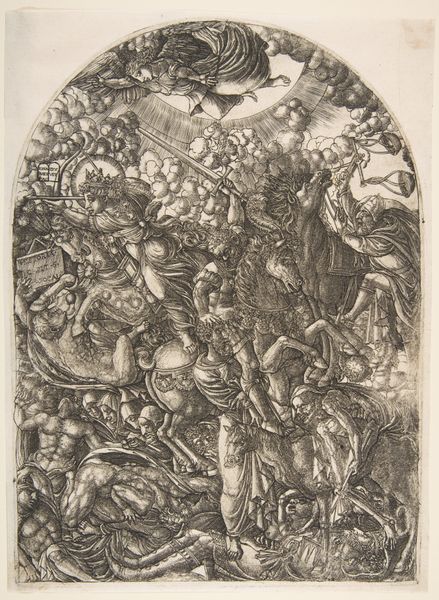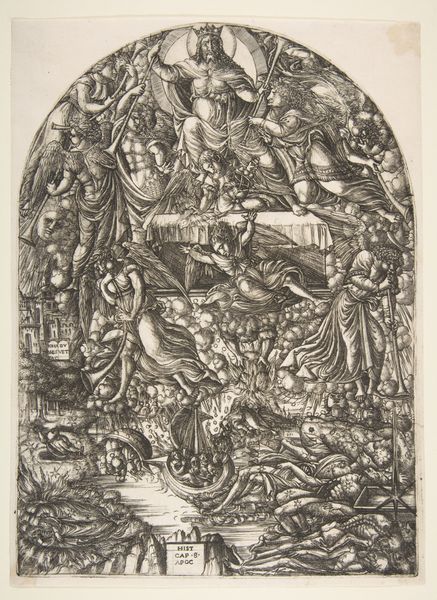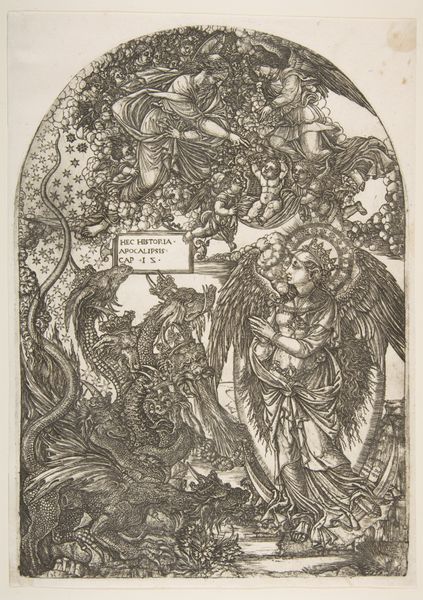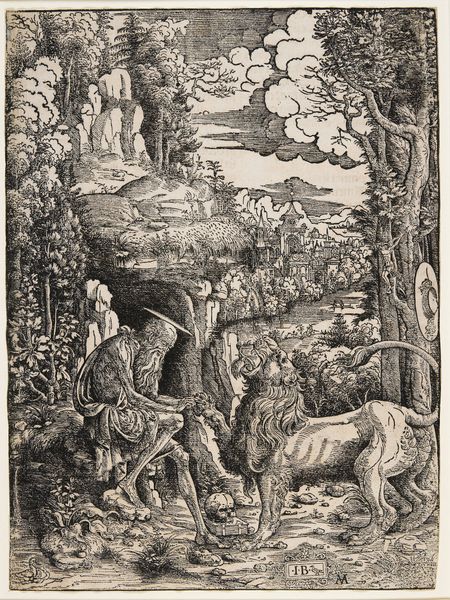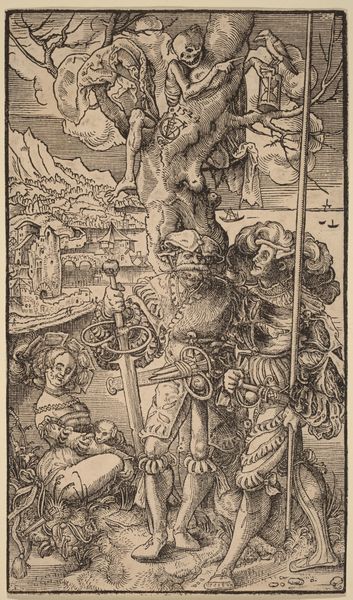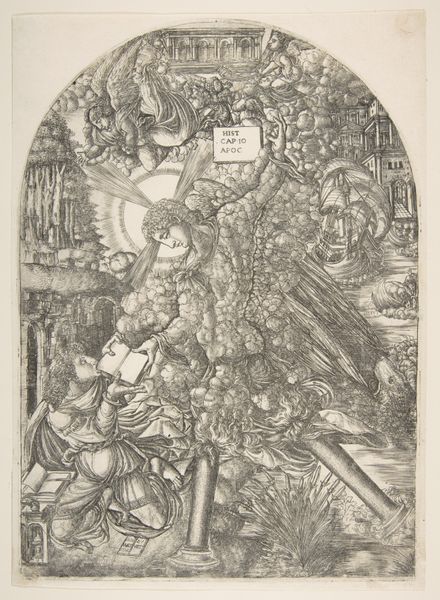
Satan bound for a Thousand Years, from the Apocalypse 1480 - 1570
0:00
0:00
drawing, print, engraving
#
drawing
#
medieval
# print
#
landscape
#
figuration
#
line
#
cityscape
#
history-painting
#
engraving
#
angel
Dimensions: plate: 11 13/16 x 12 3/16 in. (30 x 31 cm) sheet: 8 11/16 x 89 3/4 in. (22.1 x 228 cm)
Copyright: Public Domain
Curator: Jean Duvet’s “Satan bound for a Thousand Years, from the Apocalypse,” made sometime between 1480 and 1570, is an engraving teeming with intricate detail. My first impression is that it's so densely packed with information; it’s quite disorienting and anxiety-inducing! Editor: Absolutely. The weight of those lines— the very labour involved in creating such a network is palpable. The cityscape in the background, even the texture of the angels' wings—you can almost feel the engraver’s hand. What statements might Duvet be making, given the era it was produced in? Curator: The social context of the piece has me thinking about the anxieties surrounding the Reformation. It reflects a moment of religious upheaval and challenges the existing order through a story about binding evil and ushering in a new era. Consider the representations of angels depicted, actively restraining Satan - the gendering and performative aspects of that act itself, I argue, have powerful theological and socio-political resonances. Editor: Agreed, but also note the material limitations within that early printmaking process. He had to work in reverse. Duvet isn’t just depicting religious allegory, he’s actively constructing its material presence through his practice, the very ink on paper that allowed distribution of that message. Curator: Indeed. What interests me, further, is how the cityscape behind this struggle almost normalizes, universalizes, and flattens those anxieties. It implies the apocalypse isn’t happening *elsewhere* - that societal collapse and divine retribution will take place within a space people readily understand as ordered. It begs the question— for whom does it feel like divine intervention is coming? Whose perspective does Duvet amplify? Editor: I find that reading powerful given the materiality on display: prints made possible cheaper production of images; such availability meant religious and societal narratives had increased power over a greater number of people. I mean, the tools themselves of course influenced who controlled what visual narratives were broadcast in those early moments of printmaking. Curator: Exactly, it’s all about the distribution of visual narratives. Ultimately, Duvet's image operates as both a warning and perhaps, depending on one's viewpoint, a promise. Editor: Yes, “Satan Bound” gives such incredible food for thought about belief and how the creation and dissemination of material objects actively played a huge role in it all.
Comments
No comments
Be the first to comment and join the conversation on the ultimate creative platform.

